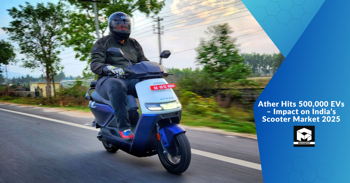So how will the TVS Jupiter CNG’s performance fare in real world conditions compared to petrol version?
Now that this CNG variant has been introduced many potential buyers and aficionados are wondering how it would fare compared to the regular petrol model. CNG is also known to be more eco friendly and cost effective but there are fears about power delivery, acceleration and riding experience in general. The CNG tank adds weight which can change the way the scooter handles and performs. As a result, people have been talking about whether the environmental and economic gains of CNG are worth any potential sacrifices in performance. For example, users are especially keen on real world experiences, since the official specifications do not always represent day to day usage scenarios.
Both, I've ridden and honestly the difference isn't as big as you think. The CNG version is a little slower off the line, but not enough to be a deal breaker when you are in the city.
Most Popular Cars
Based on Cars Popular on Maxabout
Tata Magic EV
₹ 5,00,000
4146 Views
Toyota Glanza CNG S
₹ 8,65,000
828 Views
Honda WR-V VX Diesel Exclusive Edition
₹ 11,05,344
914 Views Recently Added Cars
New Cars Added On Maxabout
VinFast VF7 Sky Infinity
₹ 25,49,000
449 Views
VinFast VF7 Sky
₹ 24,99,000
428 Views
VinFast VF7 Wind Infinity
₹ 23,99,000
453 Views Upcoming Cars
Exciting Upcoming Cars
Maruti Swift Hybrid
₹ 10,00,000
1579 Views
Renault Boreal Bigster SUV
₹ 13,00,000
1649 Views
Leapmotor T03
₹ 8,00,000
1163 Views Discussions and Questions So How Will The Tvs Jupiter Cngs Performance Fare In Real World Conditions Compared To Petrol Version
No answers found .
Latest News
Recently Added News
Triumph Street Triple RX vs Moto2: Key Differences Explained for 2025
Tuesday, 07 October 2025 6:14 AM
Citroen Aircross X 2025 Launch – Smarter, More Premium SUV at ₹8.29 Lakh
Monday, 06 October 2025 23:39 PM














